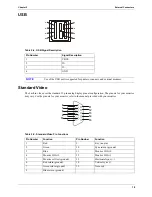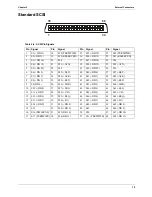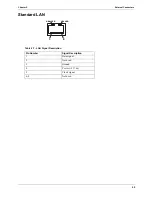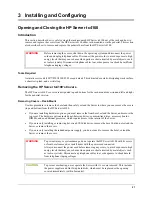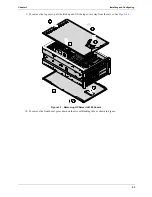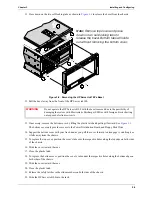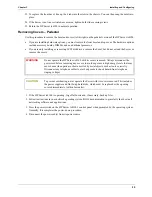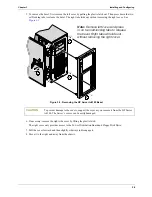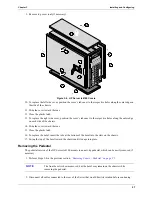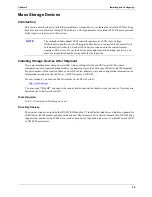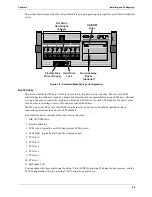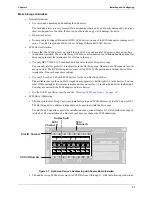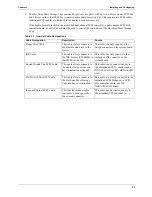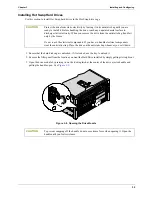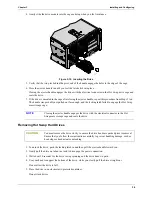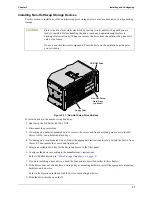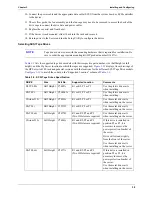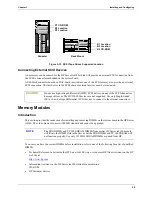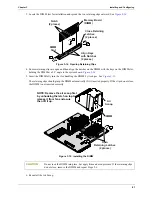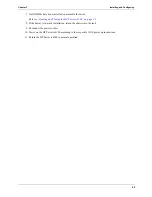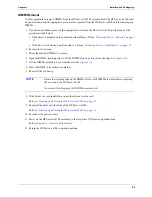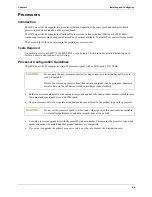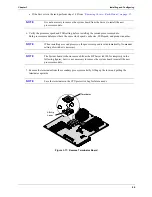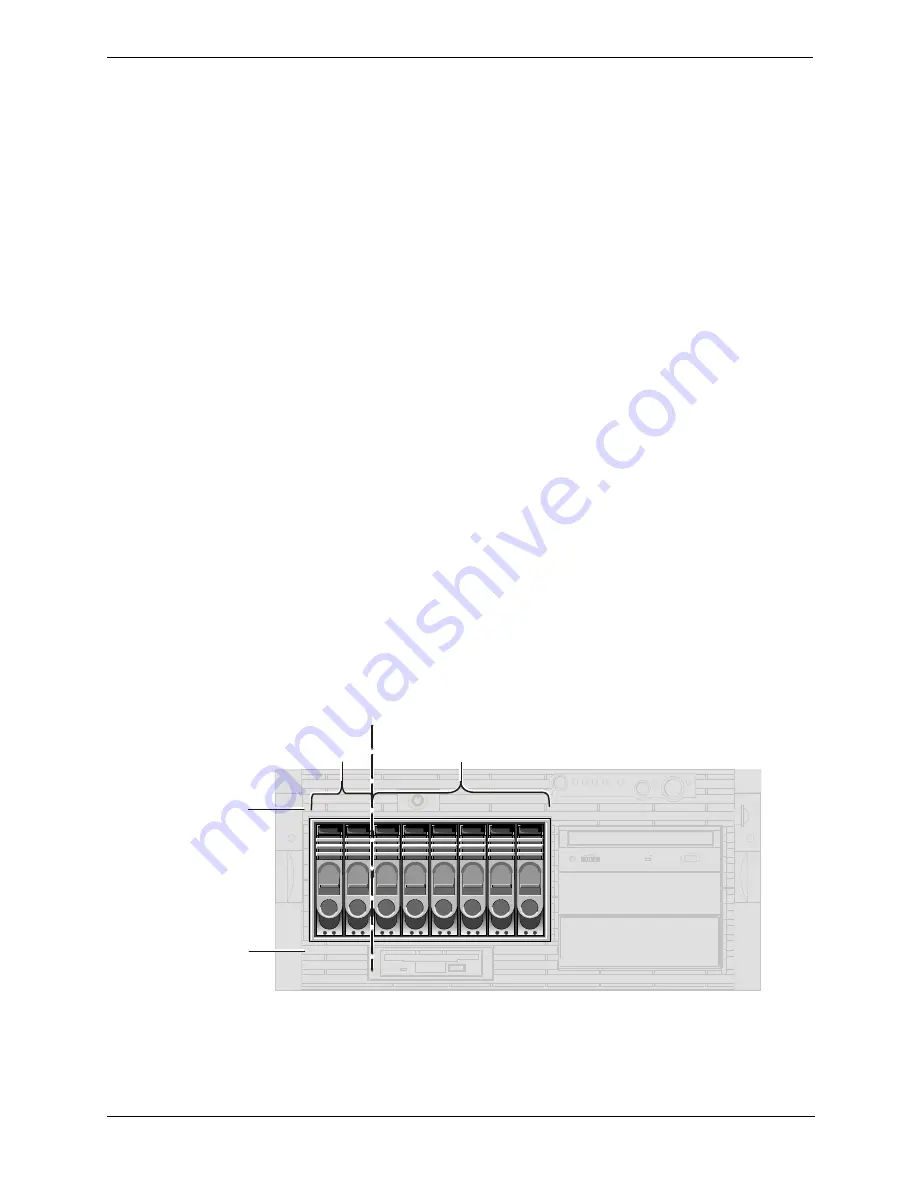
31
Chapter 3
Installing and Configuring
Mass Storage Guidelines
•
General Guidelines
•
Use care when unpacking and handling the disk drives.
The hard disk drives are very susceptible to mechanical shock and can be easily damaged by a drop as
short as one-quarter of an inch. If the drop would crack an egg, it will damage the drive.
•
Do not stack drives.
•
Do not use high voltage differential (HVD) SCSI devices on any of the SCSI channels or damage will
occur. Use only Single-Ended (SE) or Low-Voltage Differential (LVD) devices.
•
SCSI Device Selection
•
Ensure that the SCSI devices you install in
both
Hot Swap and non-Hot Swap-drive bays do not have
terminations installed. The non-Hot Swap SCSI drives are connected to a terminated cable and the Hot
Swap cage provides the termination for all slots in the cage.
•
Use only HP LVD SCSI 3.5-inch hard disk drives for the Hot Swap drive cage.
You can only use low-profile (1.0 inch) drives in the Hot Swap cage. Be sure to use filler panels to cover
any open slots. The HP Hot Swap drives come set for LVD SCSI operation and without device ID or
termination. Do not change these settings.
•
Use only
3.5-inch or 5.25-inch SCSI devices for the non-Hot Swap shelves.
The available space in the non-Hot Swap shelves supports two half-height (1.6 inch) devices. You can
order HP mounting kits for removable media devices or trays for 3.5-inch hard disk drives (half-height).
You may use narrow/wide SCSI adapters on these devices.
•
Use the SCSI Tape Drives specified in the
“Selecting SCSI Tape Drives” on page 38
.
•
SCSI Drive Addressing
•
The drives in the Hot Swap Cage are automatically assigned SCSI addresses by the HP Server tc4100.
The Hot Swap drive’s address is dependent on its position within the drive cage.
The Hot Swap Cage also supports the installation of an optional Duplex kit, which divides the cage in
two halves. The installation of a Duplex board does not change the SCSI addressing.
Figure 3-7. Hot Swap Device’s Addressing with Duplex Board Installed
•
The non-hot swap SCSI devices may use SCSI IDs from 0 through 15, with the following restrictions:
1
2
3
4 5
6 7 8
SCSI ID Number
0
1
2
3 8 9 10 11
SCSI
Channel B
SCSI
Channel A
Duplex Split
Slot ID Number


